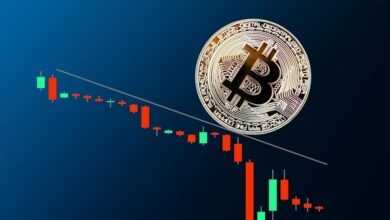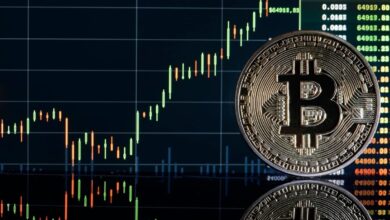
Bitcoin’s decline and the Impact of U.S. PPI on Crypto Markets
With Bitcoin’s decline leading the way, Cryptocurrency Markets have seen increasing volatility in recent weeks. Investors and market watchers are preparing for further events that might influence the direction of digital asset values as Bitcoin’s decline declines below the vital $104,000 level. Under intense examination is the U.S. Producer Price Index (PPI), a vital economic statistic that frequently offers insights into inflationary pressures and, consequently, can dramatically affect investor attitude across all asset classes, including cryptocurrencies.
We explore in great detail the present situation of the crypto markets, the mechanics underlying Bitcoin’s decline below the $104K mark, and why the forthcoming U.S. PPI data might be a major determinant of the markets in this paper. We will also discuss what this implies for investors, possible hazards, and chances in the cryptocurrency field.
Bitcoin’s Future Factors
Understanding several elements may help one forecast possible future movements of Bitcoin, which has lately dropped below the $104,000 threshold.

The continuous macroeconomic climate is one of the most important determinants since it generates uncertainty for both conventional and digital assets equally. The following are some of the main causes of this reticence:
Cryptocurrency Regulation Impact
The scene of worldwide regulations for cryptocurrency is yet unknown. The Securities and Exchange Commission (SEC) of the United States has kept closely examining bitcoin exchanges and products. The market has become much more volatile recently thanks to SEC actions challenging the designation of some digital assets as securities. The range-bound movement of Bitcoin and other cryptocurrencies results from some institutional investors’ reluctance to enter the crypto market brought on by these legal hurdles.
Globally, several nations are debating their position on cryptocurrencies; this divided regulatory environment adds more pressure on market attitude.
Macroeconomic Impact on Bitcoin
The whole macroeconomic landscape has also been rather important for Bitcoin’s recent performance. In order to fight inflation, central banks—especially the Federal Reserve in the United States—have hiked interest rates Although these actions seek to calm conventional financial markets, they also often lower risk appetite, which is vital for assets like Bitcoin.
Often regarded as high-risk investments, cryptocurrencies are less likely to be bought by investors in speculative assets like Bitcoin when borrowing costs and inflationary pressures increase. Furthermore, the price of Bitcoin usually shows an inverse correlation with the U.S. dollar; a stronger dollar usually results in less demand for Bitcoin and other cryptocurrencies.
Bitcoin Resistance Challenge
Technically, Bitcoin has encountered opposition near the $104,000 barrier; since its inception earlier this year, this has been a crucial pricing range. The struggle to keep momentum above this level implies that before another upward rise can take place, the market could have to undergo more notable consolidation. While a dip below the support levels could open the door for additional declines, traders and experts are keenly monitoring this level since a sustained move above $104,000 could indicate a continuation of the optimistic trend.
PPI and Bitcoin
Future inflation and interest rate expectations are shaped in great part by the PPI statistics. A PPI number greater than predicted indicates that inflationary pressures still exist in the economy, which would cause the Federal Reserve to either keep or perhaps increase interest rates to help to lower inflation. This would probably increase the value of the U.S. dollar, which would make Bitcoin less appealing to investors as risk assets.
Conversely, should the PPI data reveal a softer-than-expected inflation print, this could indicate that inflation is under control, so creating a more suitable environment for risk assets. Under this situation, demand for Bitcoin and other cryptocurrencies could rise, hence driving prices up.
Though PPI and Bitcoin have a complex relationship, it is indisputable that investor attitude across all asset classes is influenced by interest rate decisions and inflation. Therefore, the forthcoming PPI report can be a major driver for Bitcoin and the wider cryptocurrency market, either hastening or deepening the continuous consolidation.
Bitcoin’s Future Outlook
Looking ahead, especially with regard to Bitcoin, there are various possibilities that might transpire for the crypto industry. Should the PPI data show below expectations, indicating that inflationary pressures are receding, we may witness a temporary surge in Bitcoin as investors rebuild faith. On the other hand, if the data shows that inflation is still constant, Bitcoin may keepp its range-bound trading with the possibility for more negative impact.

Any new laws, particularly those originating from the U.S. SEC or other important authorities, could significantly affect the price movement of Bitcoin. A big thing to keep an eye on in the next months is also the continuous change in institutional acceptance of Bitcoin and other cryptocurrencies.
Bitcoin Market Outlook
The present-bound market offers chances as well as hazards for investors in the Bitcoin Surge. Although the market might not be clearly directed right now, it also offers smart traders an opportunity to profit on range price swings. Conversely, long-term investors could wish to wait for a more certain breakout above or below important levels before committing significantly.
Of course, the primary risk is that the market can stay flat for a long time, offering little chance for appreciable price increase. Those who trust in the long-term worth of Bitcoin and other digital assets, however, could view this as a chance to gather more tokens at reduced pricing levels.
Final thoughts
The next U.S. Producer Price Index (PPI) data will be vital in determining the near-term view as Bitcoin withdraws below the $104,000 line and the cryptocurrency market stays rangebound. Digital assets would be among the markets affected by the PPI’s capacity to indicate Federal Reserve prospective interest rate changes and inflation patterns. To navigate the complicated and fast-paced world of cryptocurrencies, investors should be ready for ongoing volatility and closely check critical economic data, legislative changes, and technical indications.







